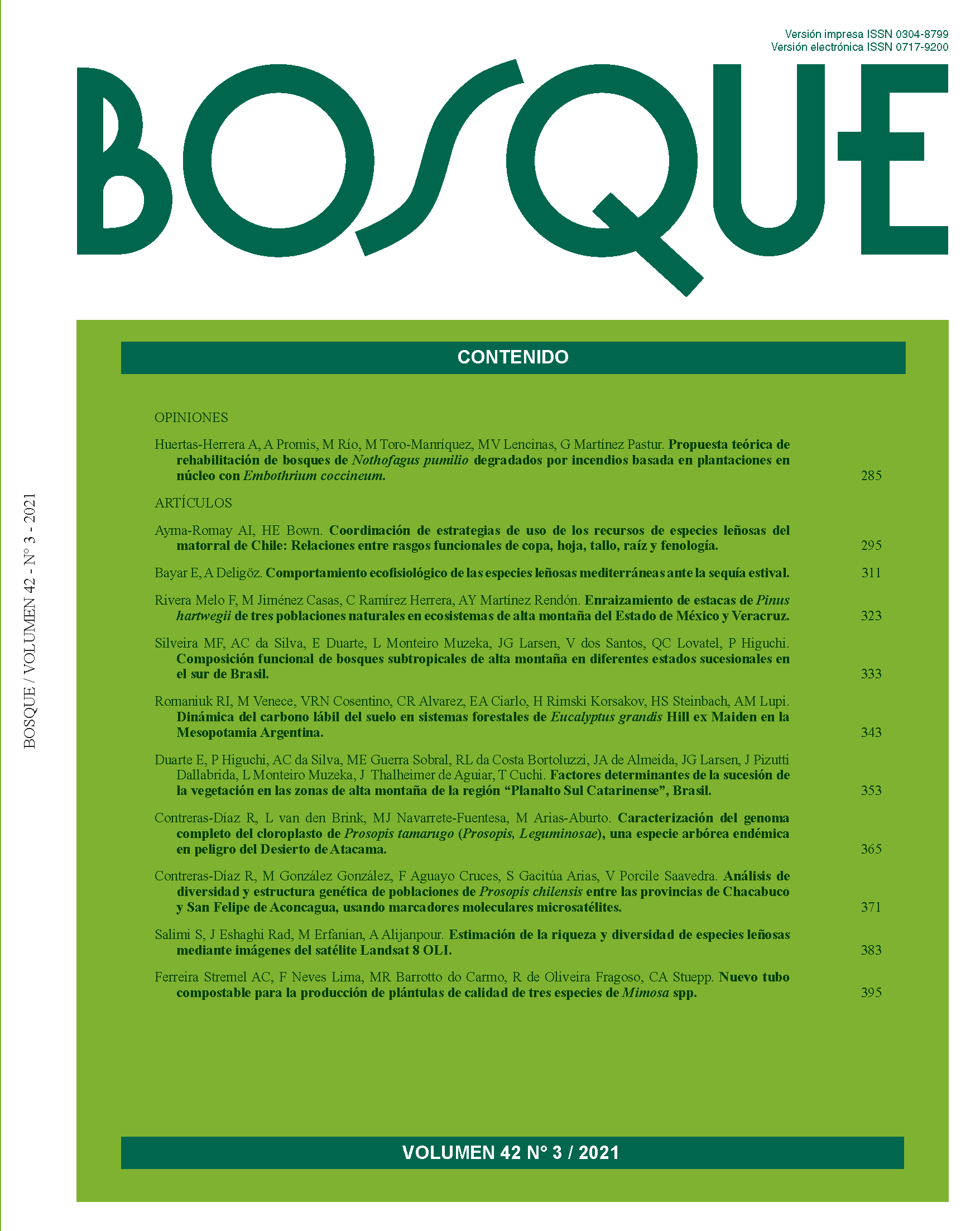Analysis of genetic diversity and differentiation of Prosopis chilensis populations between Chacabuco and San Felipe de Aconcagua provinces using microsatellite molecular markers
Main Article Content
Abstract
Prosopis chilensis is a native species of Chile distributed from Tarapacá Region to O’Higgins Region; however, despite its wide extension, the diversity, differentiation and genetic structure of its populations have not been studied. The objectives of the present study were to determine the level of genetic diversity and evaluate the genetic differentiation and population structure of P. chilensis from the central zone of Chile using seven microsatellite markers. A total of 53 alleles were detected among individuals of P. chilensis. The PIC value ranged from 0.057 (Mo05) to 0.847 (Mo16) with an average PIC of 0.636. The expected heterozygosity averaged 0.610 and the observed heterozygosity averaged 0.588. The inbreeding coefficient (FIS) for each population varied between 0.028 and 0.103. The AMOVA analysis revealed that the greatest amount of genetic variation was found among individuals (90.78 %, P = 0.0001) rather than among populations of P. chilensis (0.16 %, P = 1.000). The level of genetic differentiation of P. chilensis was very low (FST = 0.0015) among the four populations (LAPO, HUPE, ANDE and ENDO). The STRUCTURE analysis, the Mantel test and the EMD analysis indicate that all individuals are part of a single structure, there being no evidence of barriers that generate isolation. Therefore, in the future it will be necessary to carry out more population studies of this species, in such a way to detect variation and expand the genetic groups to maintain genetic richness and biodiversity of the ecosystems.

